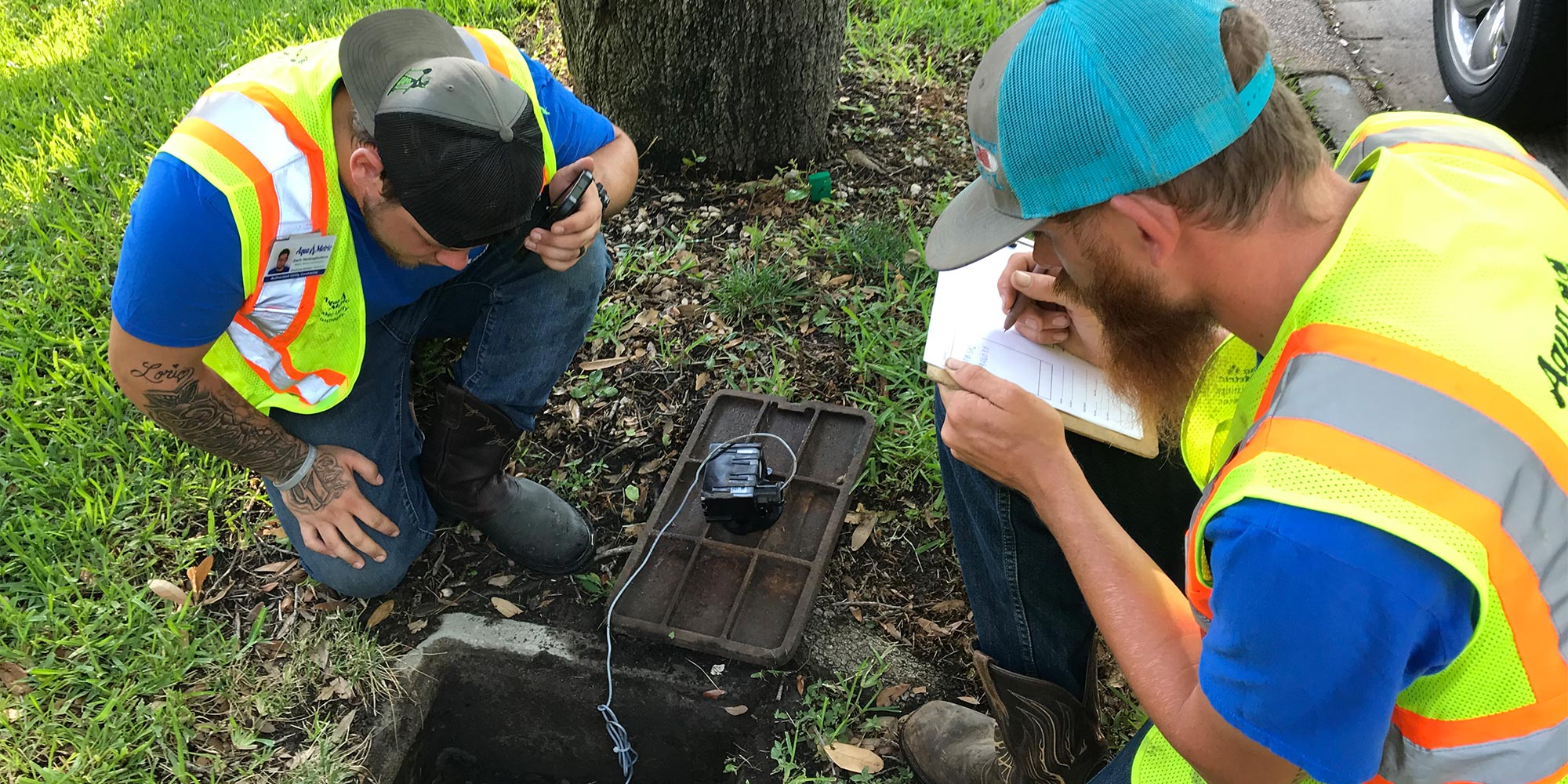Advanced Metering Infrastructure allows water data to flow Posted on May 28, 2020

Air conditioning thermostats, garage door openers, and home cameras can all be connected to other devices or networks to operate interactively, and now communities across Texas are investing in a similar type of integration for their water meters.
Digital water meters (sometimes called “smart” meters) that are a part of an Advanced Metering Infrastructure (AMI) system offer several benefits to utilities and customers over conventional meters. AMI allows water utilities to better monitor overall water system efficiency and provide more timely updates about water usage. Additionally, customers can more easily track their water use, allowing them to make better decisions and keep an eye out for possible leaks that waste both water and money.
Digital Water Meter Technology
Reading a conventional water meter requires a bit of detective work. Traditionally, to figure out how much water has been used in a home, some math is involved. Analog water meters are typically read monthly by a meter reader, and water usage is determined by subtracting a previous water meter reading from a current water meter reading.
In contrast, digital water meters collect data at regular intervals and have transmitters that send signals to a central location, eliminating the need to read the meters manually. But like most technology, there is a range of sophistication.
Automatic Meter Reading (AMR) is an older digital technology that allows water usage data to be read remotely, with the data being sent one-way to the utility. That means that meter readers can drive by to read meters and then wirelessly send readings to the billing department from the field. AMR can also involve touch-read metering in which meter readers retrieve meter data with a hand-held device.
While AMR only allows for one-way communication, Advanced Metering Infrastructure (AMI) adds two-way communication, allowing utilities to communicate with meters. Now, utilities can take advantage of more timely and detailed usage information and remotely service some aspects of their water systems.
Fort Worth’s Transition to AMI
In 2015, the Fort Worth City Council approved a $76 million project to install an AMI system and replace every residential and commercial water meter. The project, named MyH2O, is funded by the Texas Water Development Board through a low-interest loan.
As of mid-March, approximately 60,000 new digital water meters had been installed. When the project is complete, nearly 270,000 residential and commercial water meters will be replaced.
Currently, Fort Worth water customers receive a monthly bill that indicates how much water was used. According to Madelene Rafalko, the MyH2O program manager for the City of Fort Worth, once a new MyH2O customer portal is up and running, customers will have the ability to see hourly data.
Customers will have access to new tools to better manage their water use, including the ability to track water usage online through the portal and the option to receive alerts about unusually high usage, indicating a possible leak.
With the AMI system, customers also have more control over their water expenses. For example, customers can set a maximum dollar amount and receive an alert when their bill is getting close to that amount. The Fort Worth water utility says this information will help water users understand how they use water and connect their behaviors to their bill. No personal information is transmitted—only water use and a location ID code.
This will benefit the utility, as well.
“Through analyzing the data, we will be able to see trends in water use, informing our capital plan,” said Rafalko. “We've done a lot toward reducing water loss, and we are anticipating additional improvements as we identify and respond to leaks sooner.”
She added, “Customers of the future will expect a different level of transparency with their water utility.”
The Future of Digital Water Meters Statewide
John Sutton, Municipal Water Conservation Manager at the Texas Water Development Board, thinks more utilities will follow in Fort Worth’s footsteps. “If utilities are looking at a meter replacement program, I would imagine they would look at the costs involved and the short- and long-term benefits of going digital,” he said. “Everything is going electric and digital, so I think we're certainly going to see more advanced water meters.”
Sutton also predicts that as the cost of new technologies goes down, water utilities will find making the transition more appealing.
But it is not a one-size-fits-all solution. He explained, “There are concerns with getting the right infrastructure, the right meters, and the right program. Are the devices going to work with your interface? You really need to take a look at everything as a package. There's not a turnkey solution for everyone. You have to ask how this is going to interface with your existing billing system. It’s quite a project.”
Sutton knows firsthand how much water is lost by water systems, because he and his team assist water utilities with development of required municipal water conservation plans and water loss audits.
“Every effort that utilities and individuals take to conserve water can make a difference,” he said.
Supplemental Video
This article is posted in Technology / Water Data .